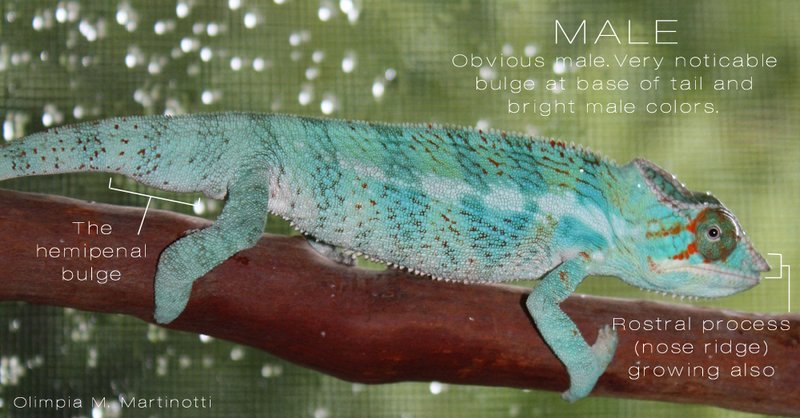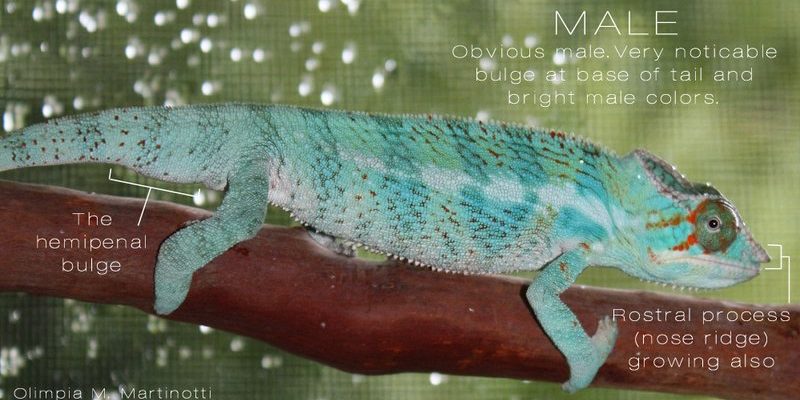
In the chameleon world, gender differences aren’t subtle, but they can be confusing if you don’t know what to look for. Think of it like picking out your favorite fruit at the market—you need to be aware of the signs that show which ones are ripe for the picking! Let’s break down the easy ways to identify the gender of your panther chameleon, so you can make sure you’re ready to welcome the right member into your home.
Understanding Panther Chameleons
Before diving into gender identification, it helps to understand what makes panther chameleons unique. These reptiles are native to Madagascar and are known for their dramatic color changes. They can display a range of hues, from bright greens to deep blues, and even rich reds. Each chameleon has its own personality, and their colors can reflect their mood or stress levels.
So why does gender matter? Knowing the sex of your chameleon can influence how you care for it. Males and females have different behaviors, space requirements, and even dietary needs due to their natural instincts. Males are typically larger and often more vibrant, while females tend to have different coloration and size.
Physical Traits of Male and Female Panther Chameleons
When it comes to spotting the differences, the physical traits between male and female panther chameleons are key. Here are the main things to look for:
- Size: Males are generally bigger, averaging about 14 to 20 inches long, while females are smaller, usually around 10 to 14 inches.
- Coloration: Males are often brighter and more vivid with complex patterns, while females usually feature more muted colors.
- Casque Height: Males have a taller and more pronounced casque (the helmet-like structure on their heads), whereas females have a flatter, less pronounced casque.
These differences are noticeable, especially as they reach maturity, usually around six to eight months old. When you look at your chameleon, take a moment to observe these traits closely.
Behavioral Differences Between Genders
Another way to tell if your panther chameleon is male or female is through behavior. Males often display more *dominant* behavior and are generally more active. They can be more territorial and will often display during courtship. If you have multiple chameleons, it’s common to see males puffing up and showing off their colors to assert dominance.
Females, on the other hand, can sometimes be more reclusive and shy. They might prefer to hang out in a quieter spot rather than basking in the open as males do. Additionally, females may exhibit more nesting behaviors, especially if they are ready to lay eggs. This behavioral distinction can give you hints about your chameleon’s gender.
Examining the Tail and Hemipenes
Now, let’s get a little more technical. A physical examination can also help determine gender.
- Tail Shape: Male panther chameleons have thicker, more robust tails that are slightly flattened, while the females’ tails are usually thinner and more cylindrical.
- Hemipenes: Here’s a bit of a graphic detail—males possess hemipenes, which are reproductive organs that are usually not visible unless they are in breeding mode. If you happen to see a small bulge at the base of the tail in males, that’s a strong indicator you’ve got a boy!
It’s usually easiest to observe these features when your chameleon is calm and relaxed, so don’t hesitate to gently handle them if it feels comfortable for both of you.
Coloration Changes Over Time
One of the most fascinating aspects of chameleons is their ability to change colors, but these changes can also signal gender. Males often show more vivid and varied colors when they are mature or excited, while females might become darker or display more subdued tones when stressed or preparing to lay eggs.
Here’s the thing: if you’re new to chameleons, it might take some time to learn the basics of their color changes. Watching your chameleon over various situations will help you get a feel for how their colors shift. This knowledge can be crucial—it helps with stress monitoring and understanding their overall well-being.
Common Misconceptions About Gender Identification
There are several myths floating around regarding how to identify the gender of panther chameleons. One of the biggest misconceptions is that it’s impossible to tell until they are fully grown. While it’s true that the gender isn’t always perfectly clear in young chameleons, many of the traits we’ve discussed will start to develop by the time they are six months old.
Another myth is that all chameleons look the same regardless of gender. In reality, the differences we discussed—size, coloration, and behavior—can help pet owners distinguish between males and females much easier than you might think.
Identifying the gender of your panther chameleon doesn’t have to be a stressful process. With a little patience and observation, you can become well-acquainted with their unique characteristics. Whether you’re looking at size, color, tail shape, or behavior, there are several clear indicators to help guide you.
By understanding these differences, you’re not just gaining a fun fact; you’re also setting yourself up for a better relationship with your new pet. Remember, knowing whether you have a male or female chameleon can significantly impact care, environment, and even how you interact with them. With this knowledge in hand, you’re ready to embrace the delightful quirks of your panther chameleon, whatever their gender may be!

